#Urban Development and Planning
Explore tagged Tumblr posts
Photo
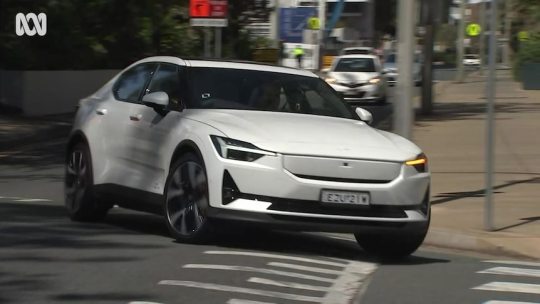
Are Australians ready to give up their cars? Urban planners warn home buyers might not have a choice Apartment owners could share cars as parking-free housing is introduced to curb major cities' traffic congestion. https://www.abc.net.au/news/2023-09-13/car-sharing-residents-developments-reduce-city-congestion/102846572
#Road Transport Industry#Public Transport#Shared Transport#Urban Development and Planning#Sustainable Development#Infrastructure Policy#Environmentally Sustainable Business#Mackenzie Colahan#Latest business news
0 notes
Text
Urban Renewal vs. Public Housing: Lessons from Baltimore and Pruitt-Igoe
Urban renewal and public housing have played a central role in shaping American cities, often with conflicting results. While urban renewal aims to modernize and revitalize decaying cityscapes, it frequently displaces long-standing communities, exacerbating socioeconomic inequalities. Conversely, public housing has been used to provide affordable homes for low-income populations, yet poor planning and neglect have led to segregation, poverty concentration, and failure.
This article explores these urban planning challenges through two significant case studies: Baltimore’s Inner Harbor renewal project and the Pruitt-Igoe public housing complex in St. Louis. These examples reveal the successes and failures of 20th-century urban planning, offering critical lessons for the future of equitable city development.
The Case for Urban Renewal: Baltimore’s Inner Harbor
In the mid-to-late 20th century, Baltimore launched one of the most ambitious urban renewal projects in the U.S., aimed at revitalizing its deteriorating downtown and waterfront areas. The redevelopment of Charles Center and the Inner Harbor sought to attract businesses, tourists, and high-income residents back into the urban core.
✅ Economic Growth & Tourism Boost:
The Inner Harbor was transformed into a vibrant commercial and cultural hub, with attractions like the National Aquarium and Maryland Science Center.
New retail, office spaces, and residential developments increased property values and business investments.
✅ Mixed-Use Development & Walkability:
The project embraced modern urban design principles, making the Inner Harbor a 24-hour activity zone instead of a purely business district.
The redevelopment created public spaces, waterfront promenades, and green areas, making the area more livable and attractive.
However, despite these successes, Baltimore’s renewal came with a price—one paid disproportionately by lower-income residents.
📉 Displacement & Gentrification:
The rising cost of living forced many working-class and minority residents out of the area.
Long-standing communities were pushed to the city's margins, leading to increased inequality and social tensions.
📉 Who Really Benefited?
Many of the jobs created by urban renewal did not go to local residents but rather to suburban commuters and outside investors.
The benefits were concentrated in wealthier, predominantly White areas, deepening racial and economic disparities.
Lesson: Urban renewal can drive economic growth, but without equitable policies, it risks displacing the very communities it aims to uplift. Sustainable urban planning should incorporate affordable housing, job creation, and community input to ensure benefits reach all residents.
The Failure of Public Housing: St. Louis’ Pruitt-Igoe Disaster
While Baltimore’s renewal focused on economic revitalization, St. Louis’ Pruitt-Igoe public housing complex is a cautionary tale of poorly executed housing policies. Built in the 1950s, Pruitt-Igoe was meant to be a modern, affordable housing solution for low-income residents. However, within two decades, it became one of the most infamous failures of public housing in America.
📉 Economic & Social Isolation:
As St. Louis lost manufacturing jobs and white flight accelerated suburbanization, Pruitt-Igoe’s predominantly Black residents faced growing unemployment and poverty.
Many residents struggled to afford rent, leading to funding shortages for maintenance and services.
📉 Poor Urban Design & Maintenance Neglect:
The "towers in the park" design created isolated, unsafe spaces that became hotspots for crime.
Elevator breakdowns, vandalism, and lack of maintenance made the complex nearly uninhabitable.
📉 Demolition: The End of an Era
By the late 1960s, Pruitt-Igoe had become a symbol of public housing failure.
In 1972, just two decades after its construction, the federal government demolished the entire complex—a moment often regarded as the death of high-rise public housing projects in the U.S.
Lesson: Public housing cannot succeed without long-term economic investment, proper maintenance, and integration into the broader urban fabric. Instead of isolating low-income populations in concentrated developments, policies should prioritize mixed-income housing, economic support, and community services.
Urban Planning Lessons for the Future
The contrasting stories of Baltimore and Pruitt-Igoe illustrate the complex challenges of urban development. Both cases emphasize the need for urban planning approaches that balance economic development with social equity.
✅ Urban Renewal Should Include Community-Driven Growth
Economic development should not come at the cost of displacing vulnerable communities.
Cities must include affordable housing policies, local hiring initiatives, and resident engagement in renewal projects.
✅ Public Housing Must Be Integrated, Not Isolated
Instead of large, isolated housing blocks, urban planners should invest in mixed-income, mixed-use developments that connect residents to jobs and services.
Public housing policies should prioritize maintenance and long-term sustainability rather than quick-fix solutions.
✅ Equitable Urban Planning Requires Thoughtful Policy
Planners and policymakers must address historical inequities in housing and economic access.
Transit, education, and workforce development programs should accompany any large-scale urban redevelopment effort.
Conclusion: Rethinking Urban Development for the 21st Century
Urban renewal and public housing remain central to urban development debates today. Baltimore’s Inner Harbor shows the power of economic revitalization—but also its risks of gentrification and exclusion. Pruitt-Igoe, on the other hand, serves as a lesson in the failure of isolated, underfunded public housing projects.
For cities to create sustainable, inclusive growth, planners must move beyond outdated models and embrace community-centered, equitable policies that ensure all residents benefit from urban progress.
#smart growth#pruittlgoe#public housing#community development#housing inequality#gentrification#baltimore#city development#economic development#gis#portfolio#strong towns#urban planning#sundusbhatti
15 notes
·
View notes
Text
Me, a Pokémon fan who has also played Yokai Watch and Yokai Watch 2: Psychic Spectres, watching my fellow Pokémon fans freak the fuck out about Pokémon Legends Z-A only being set in Lumiose City: You know there are other monster collecting games that have no issues putting a full Dex worth of monsters into a game set in one city, right?
#pokemon#pokemon legends za#pokémon#yokai watch#pokemom legends Z-A#Seen way too many people going WHERE ARE WE SUPPOSED TO CATCH POKÉMON IN ONE CITY????#I dunno Yokai Watch did it?#Plus all the other non monster catching games that are set in one city that are still good games#I understand the part about being sad about not seeing the rest of Kalos but as for catching Pokémon in one city we'll be fine#Plus its an urban development plan there are probably areas that aren't built up fully yet that are rural or forested#And the Paris Catacombs+ abandoned buildings for ghosts etc
44 notes
·
View notes
Text

youtube

#Youtube#Baton Rouge#Louisiana#St. George#incorporation#racial segregation#white flight#urban planning#community division#socioeconomic disparities#tax revenue#NAACP#education system#local government#racial demographics#social justice#affluent residents#constitutional rights#urban development#racial inequality#social segregation#fiscal impact#community representation#tax allocation#urban governance#local politics#racial tensions#civil rights#socioeconomic divide
22 notes
·
View notes
Text


By the Kaktus Towers in Copenhagen.
#my photos#copenhagen#københavn#denmark#flowers#wild flowers#nature photography#simon#photo of the day#city planning#urban design#urban development#kaktus towers#native plants#colorful#super bloom#plants#plant life#bloom#blossom#bouquet#spring
8 notes
·
View notes
Note
I'm a big fan of building commie blocks to ameliorate the US housing crisis -- and putting them in the public parks that were stolen from other communities to give colonisers some trees to look at -- but what policies should be enacted to get suburbanites into beautiful and efficient bedspace apartments with kitchens and washrooms shared by a floor?
As a good social democrat, I'm contractually obligated to prefer Red Vienna to your proper commie block. Short of a complete class revolution that completely upends the social hierarchy, a significant part of ensuring that social housing pulls off being "a living tapestry of a mixed community" is building it to middle-class standards (including aesthetic standards) so that people with the money to find alternatives don't all leave. Art Deco is a hell of a lot chic-er than the boring minimalist crap that luxury developers are getting away with these days.
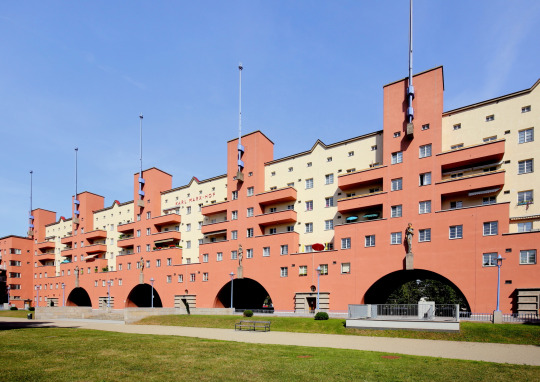
Also, don't build them in parks: green space is not only important for environmental sustainability but also the health and mental health of working-class and poor communities who can't afford houses in the suburbs, and we should be encouraging in-fill development instead. (Build them on golf courses instead, because they are classist, invasive, artificial monocultures that do nothing for the environment.)
In terms of how to make suburbia more in synch with dense, sustainable social housing, there are a number of necessary changes:
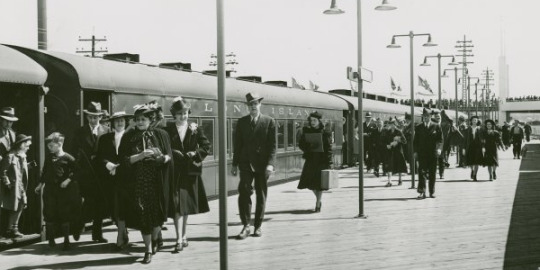
Commuter rail: suburbs predate the car by a fair few decades, and originally sprung up along the routes of commuter rail lines. Well, it turns out that transit-oriented development and dense transit corridors go hand-in-hand: if you can build higher-density units near transit lines, people will use mass transit to commute, and if there are well-planned areas of higher density around major urban areas, the increased number of commuters can support more regular transit services.
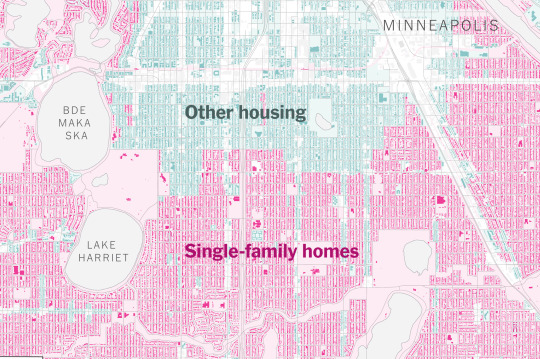
Planning/zoning/ligitation revolution: as I mentioned in my student housing post, one of the major reasons why it's so hard to build affordable housing projects is that local NIMBY groups use every legal tool in the book to bury them. So there needs to be pretty comprehensive reforms of zoning regulations (banning single-family zoning, reducing set-backs and eliminating mandatory parking, getting rid of "unrelated persons" limitations, getting rid of building heights limits, etc.), standardization of the permitting and development approval process, streamlining of the public comment/hearing process and environmental review process for model projects, and extreme limits on litigation for model projects.
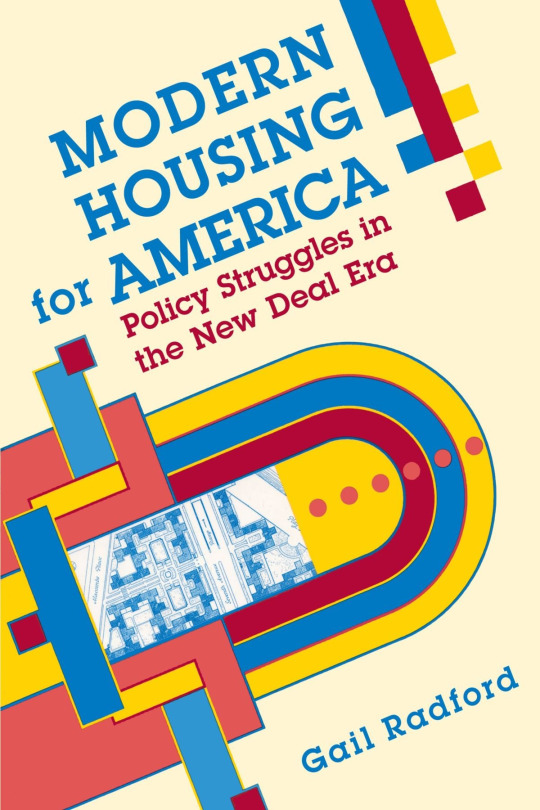
Financing reform: as I sort of imply in my Red Vienna section above, a big part of making social housing/public housing successful and avoiding replicating or increasing class and racial segregation is adhering to middle-class minimum standards. This has important knock-on implications:
you need to eliminate requirements for absolute lowest possible land costs (which restrict social housing to economically and socially isolated areas).
you need to raise allowable construction costs, so that you can achieve those aesthetic standards and avoid corner-cutting like smaller rooms and lower ceilings, single-thickness walls/floors/ceilings, no doors on cabinets or closets, cheap cladding and wiring and pipes and other building materials, low-quality insulation and HVAC, etc. Not only do middle-class folks notice this stuff and go elsewhere, but it's all penny-wise and pound-foolish, because cheap construction runs down faster which increases maintenance costs, and sometimes it just straight-up kills people.
you need to adequately finance maintenance, services, and amenities. This is crucial to keeping tenants with deeper pockets, but it's also another one of those things where penny-pinching is counter-productive in the long-run. The more you save on maintenance costs, the faster the buildings run down and the more expensive repairs you have to make. The more you save on services like superintendants and doormen, the more your tenants end up having to spend on handymen and the more you have to spend on police and repair costs. And so forth.
And there is a real potential here for all kinds of positive feedback loops: spending money on achieving higher standards of construction and operation means that you can hang onto and attract higher-income tenants, which means you can have sliding scale rents that cross-subsidize tenants and pay for higher construction and operating costs, and the poor and working class tenants who couldn't have paid for those higher costs and amenities on their own enjoy a "positive externality" for once.
#public policy#public housing#social housing#social democracy#urban development#urbanism#urban planning#urban studies#housing#nimbyism#nimby#red vienna#commie blocks
114 notes
·
View notes
Text
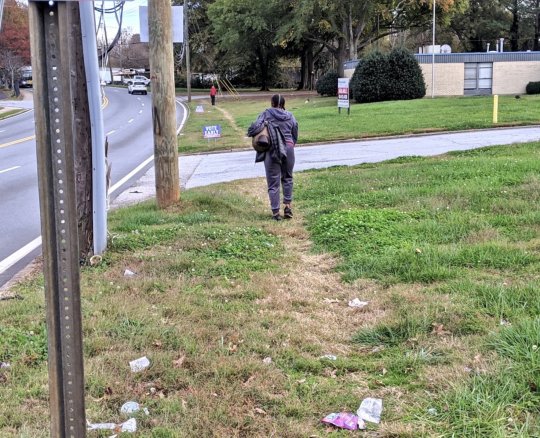
Classism. Racism. Ageism. Ableism. Climate denial.
No matter how we rationalize the wasteful destruction of nature through car-scaled urban sprawl, or how we rationalize the act of robbing people of chances to live with dignity unless they can drive, those evils are at the core.
#atlanta#urbanism#pedestrian safety#walkability#urban planning#urban design#car-centric developmnent#urban sprawl#suburban sprawl#sprawl#urban development#urbanismo#urbanisme
81 notes
·
View notes
Text
Atlanta's tree canopy has to co-exist with more growth in residential density
by Darin Givens, 9/20/2023
There's an excellent op-ed in the AJC today arguing that Atlanta's need for greater density of people can co-exist with a tree canopy; even if we initially lose some trees for housing development, there's a great opportunity to expand the canopy in targeted ways.
Here's a quote from it:
"Higher density development makes further room for new street trees and stormwater infrastructure. Parking lots could become dense, energy efficient housing. Road lanes for cars could be transformed into tree-lined cycleways. If we’re willing to replace a fraction of Atlanta’s road space with trees we could have cool, shaded streets even in our city’s densest neighborhoods without sacrificing limited developable land."
Replacing some of our asphalt with trees is a great idea. In the Vine City neighborhood alone, the amount of land that's surrounded by heat-trapping parking lots is substantial, and likely contributes to heat island effects (see below).
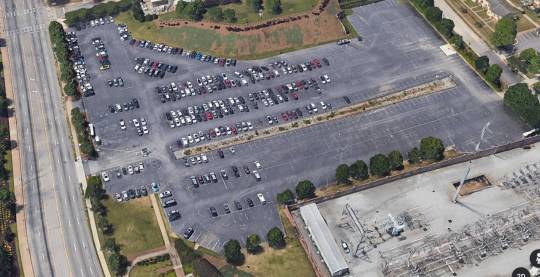
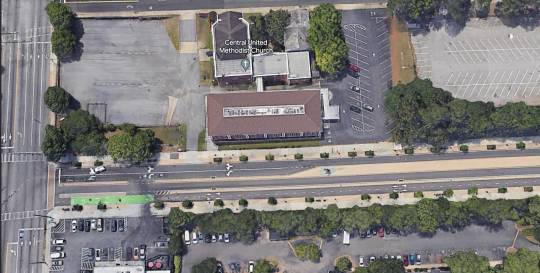


One problem is that the conversation about tree canopy in Atlanta can often be used to block the exact type of infill development that's needed for addressing climate change by creating a more walkable, more transit-supportive city.
The op-ed addresses this:
"As our city looks to update its zoning and tree ordinances, we must recognize that a “save every existing tree” approach ignores the realities of our environment, development finance and housing affordability. We need to plant more trees, but mandating green infrastructure without providing adequate flexibility or incentives can hinder the dense development that we desperately need to lower carbon emissions and house our growing population."
Well said!
The piece was written by Anton Gudiswitz (chapter lead at Abundant Housing Atlanta) and Jason Lathbury (transportation committee chair for the Georgia Sierra Club). Kudos to them.
#atlanta#urbanism#urban planning#city planning#density#urban density#urban development#walkable cities#climate action#tree canopy
25 notes
·
View notes
Text

Of course climate has the final say on the location of cities. Clueless planners looking for a quick profit create misery for the people who will be living in those locations in just a few decades.
6 notes
·
View notes
Text
Budget 2024 - What It Means for The Real Estate Industry - Part III
The Indian Union Budget 2024 has been released, and its implications for the real estate sector are substantial. This article will delve into the various facets of the budget, examining how the proposed changes will impact the real estate industry. As one of the most dynamic real estate markets in India, Gurugram's developments are keenly watched by investors, developers, and homebuyers alike. For a comprehensive overview of real estate in Gurugram and to stay updated on market trends, visit Ehouzer.
Key Highlights of Budget 2024
Increased Infrastructure Investment
One of the most significant announcements in the 2024 Budget is the increased allocation for infrastructure development. The government has earmarked an additional ₹2 trillion for infrastructure projects, which includes improvements in transportation, urban planning, and public utilities. This investment is expected to have a ripple effect on the real estate sector.
For Gurugram, this means enhanced connectivity and infrastructure. New roads, metro lines, and better public services will make the city more attractive to investors and homebuyers. Improved infrastructure typically leads to an increase in property values and a boost in real estate activities.
Affordable Housing Incentives
The Budget 2024 continues to emphasize affordable housing, a key focus area for the government. The introduction of new incentives for developers who build affordable housing projects is expected to drive the construction of more budget-friendly residential options. This initiative aligns with the government's goal of providing housing for all and is likely to stimulate demand in the residential real estate sector.
In Gurugram, the demand for affordable housing has been on the rise due to the influx of professionals and the growing population. With these new incentives, developers are likely to invest more in affordable housing projects in the region. For detailed insights into the real estate opportunities in Gurugram, explore Ehouzer
Tax Reforms and Benefits
The Budget introduces several tax reforms that are expected to benefit both developers and homebuyers. Key among these is the increase in the tax deduction limit on home loan interest payments. Homebuyers will benefit from higher deductions, making homeownership more affordable.
For developers, the Budget proposes tax incentives for the construction of green buildings and eco-friendly projects. This shift towards sustainability is expected to influence real estate development trends, encouraging the adoption of green building practices.
These tax reforms will likely boost the real estate market in Gurugram, as more homebuyers and developers take advantage of these benefits. To understand how these changes may impact your real estate investments, visit Ehouzer.
Impact on Residential Real Estate
Demand for Residential Properties
The combination of increased infrastructure investment and affordable housing incentives is expected to drive up demand for residential properties. In Gurugram, the residential real estate market is likely to see a surge in demand as more people look to invest in property due to improved infrastructure and attractive housing options.
This uptick in demand is also anticipated to influence property prices. While affordable housing projects may provide budget-friendly options, the overall rise in property demand could lead to increased prices in other segments of the residential market.
Shift Towards Sustainable Living
The Budget’s emphasis on green building incentives is expected to accelerate the shift towards sustainable living. Developers in Gurugram are likely to adopt more eco-friendly practices and technologies in their projects. This shift not only aligns with global sustainability trends but also meets the growing demand from environmentally-conscious homebuyers.
Sustainable living features, such as energy-efficient appliances, solar panels, and green spaces, are becoming increasingly popular. Homebuyers in Gurugram will benefit from these developments, gaining access to more sustainable and energy-efficient housing options.
Commercial Real Estate Developments
Growth in Office Spaces
The infrastructure investment outlined in the Budget is likely to benefit the commercial real estate sector, particularly the office space market. Enhanced connectivity and improved urban infrastructure will make Gurugram an even more attractive location for businesses.
Companies are expected to seek out modern, well-connected office spaces to accommodate their growing operations. This increased demand for office space will drive commercial real estate development in Gurugram, with new projects and expansions likely to emerge.
Retail and Mixed-Use Developments
The commercial real estate market in Gurugram will also see growth in retail and mixed-use developments. The increased focus on infrastructure and urban development will attract more retail businesses and mixed-use projects, which combine residential, commercial, and recreational spaces.
These developments are expected to enhance the urban landscape of Gurugram, providing residents and visitors with more shopping, dining, and entertainment options. For insights into the latest commercial real estate trends and opportunities, visit Ehouzer.
Investment Opportunities
Real Estate Investment Trusts (REITs)
The Budget 2024 includes provisions for the growth of Real Estate Investment Trusts (REITs), which offer a viable investment option for those looking to invest in real estate without directly purchasing property. REITs provide an opportunity to invest in a diversified portfolio of real estate assets and benefit from rental income and capital appreciation.
Investors in Gurugram should consider exploring REITs as a way to diversify their investment portfolio and gain exposure to the commercial real estate market. The growth of REITs in India presents new opportunities for both individual and institutional investors.
Affordable Housing Projects
With the new incentives for affordable housing, developers are likely to focus on projects that cater to the budget segment. Investors looking to capitalize on this trend can explore opportunities in affordable housing projects in Gurugram. These projects are expected to offer attractive returns due to the high demand for affordable housing.
For more information on investment opportunities in the real estate sector, including affordable housing and REITs, visit Ehouzer.
Regulatory Changes and Their Impact
Simplified Land Acquisition Processes
The Budget proposes measures to simplify land acquisition processes, which is expected to benefit real estate developers. Streamlined procedures will reduce delays and lower costs associated with land acquisition, facilitating faster project completion.
In Gurugram, these regulatory changes will likely lead to a more efficient real estate development process. Developers will be able to expedite their projects, which will, in turn, enhance the overall growth of the real estate market in the region.
Enhanced Transparency and Accountability
The Budget emphasizes the need for greater transparency and accountability in the real estate sector. New regulations are expected to address issues such as project delays, non-compliance, and financial transparency. These changes aim to build trust among investors and homebuyers.
For stakeholders in Gurugram, these regulatory changes will contribute to a more transparent and reliable real estate market. Developers and investors can benefit from the increased clarity and accountability in real estate transactions.
Challenges and Considerations
Potential Impact on Property Prices
While the Budget's initiatives are likely to boost the real estate sector, there are concerns about the potential impact on property prices. Increased demand for residential and commercial properties may lead to higher prices, which could affect affordability for some buyers.
Homebuyers and investors in Gurugram should consider these factors when making real estate decisions. It is essential to stay informed about market trends and property price movements to make well-informed investment choices.
Balancing Supply and Demand
The growth in real estate development, driven by increased infrastructure investment and affordable housing incentives, must be balanced with supply and demand dynamics. Overbuilding or misalignment between supply and demand could impact the stability of the real estate market.
Developers and investors in Gurugram should carefully assess market conditions and demand trends to ensure that new projects align with the needs of the market.
Conclusion
The Union Budget 2024 presents a range of opportunities and challenges for the real estate industry, with significant implications for the market in Gurugram, Haryana. Increased infrastructure investment, incentives for affordable housing, tax reforms, and regulatory changes are set to shape the future of real estate in the region.
As the real estate landscape evolves, stakeholders in Gurugram must stay informed and adapt to the changes to leverage new opportunities and address potential challenges. For more detailed insights into the real estate market in Gurugram and to explore investment opportunities, visit Ehouzer.
For personalized advice and assistance with your real estate investments, contact us.
#realestate#budget 2024#gurugram#housingmarket#infrastructure#affordablehousing#commercial real estate#residential property#investment#sustainableliving#greenbuilding#urban development#property#realestateinvesting#homebuyers#propertyinvestment#realestatemarket#realestatenews#realestatetips#housing development#economicgrowth#urban planning#propertyvalue
3 notes
·
View notes
Text
youtube
Our new video with Urban Ecologist Kat Superfisky is live :)
We love our STEM enbys... Superfisky works on river restoration in the City of LA and has devoted their life to helping nature thrive in urban environments. Check them out in our new Teaching Climate Together episode 💚
#queerbrownvegan#sustainability#climate change#environmentalism#social justice#environment#climate crisis#environmental justice#activism#intersectional environmentalism#urban#urban ecology#urban planning#urban development#los angeles#kat superfisky#Youtube
5 notes
·
View notes
Text
Sterling Heights: A Growing Suburban Hub in Michigan
Sterling Heights, Michigan, is a city that continues to evolve, with steady population growth, rising incomes, and a shifting demographic landscape. As the fourth-largest city in Michigan, it plays a significant role in Macomb County’s urban development, offering a mix of residential stability, economic opportunities, and strategic infrastructure.
By analyzing population trends, housing shifts, and income changes from 2014 to 2019, we can better understand Sterling Heights’ strengths and challenges as it moves toward 2040. Compared to its neighboring cities—Warren, Troy, and Clinton Township—Sterling Heights presents a unique case of economic resilience and suburban expansion.
A Brief History of Sterling Heights
Originally a rural farming community, Sterling Heights transitioned into a suburban city during the post-World War II era, as Detroit residents moved to the suburbs. Incorporated as a city in 1968, it quickly became a key player in southeast Michigan’s economy, benefiting from its proximity to Detroit and the automotive industry.
Strategically located along the Clinton River, with access to major highways (I-75, I-94, and I-696), Sterling Heights has become a desirable destination for both residents and businesses. Today, its continued growth suggests an attractive housing market and strong economic foundation.

Sterling Heights vs. Neighboring Cities: Key Demographic Trends (2014-2019)
1️⃣ Population Growth: A City on the Rise
Unlike nearby Warren and Clinton Township, which saw population declines, Sterling Heights experienced a slight population increase, growing by 700 residents (0.53%) between 2014 and 2019.
📈 Troy also grew (by 1.16%), but unlike Sterling Heights, it saw a drop in housing units. This suggests that while Troy remains attractive, it may face challenges in expanding its housing capacity.
📉 Warren and Clinton Township both lost residents, indicating possible suburban migration trends or economic challenges affecting these communities.
2️⃣ Housing & Household Trends: Expanding Options for Residents
🏠 Sterling Heights increased both housing units (+1.49%) and total households (+3.49%), aligning with Macomb County’s overall housing expansion.
📉 Warren and Clinton Township, however, experienced a loss in housing units and households, suggesting possible declining demand or aging housing stock.
📉 Troy had fewer housing units but saw an increase in households, indicating a shift toward higher occupancy rates or more multi-family housing options.
3️⃣ Median Income: Economic Strength Despite Inflation
💰 Sterling Heights showed the highest median income growth, rising from $59,011 in 2014 to $67,238 in 2019 (a 13.95% increase). Adjusted for inflation, the real increase was 5.89%.
📉 Warren, Troy, and Clinton Township all saw income declines when inflation was factored in, indicating regional economic challenges.
📈 Macomb County as a whole saw a strong 27.65% income increase (18.68% inflation-adjusted), suggesting that Sterling Heights is contributing significantly to the county’s overall economic resilience.

Who’s Moving In & Who’s Moving Out? Analyzing Age Trends
🔹 Young adults (20-24) decreased by 30.4%, possibly due to college attendance or job relocation. 🔹 The 25-34 age group grew by 16.5%, suggesting Sterling Heights is attracting young professionals. 🔹 The 35-54 age group declined, indicating that some middle-aged professionals may be relocating. 🔹 Older residents (55-59) increased significantly, likely due to aging Baby Boomers.
📉 The slight decrease in the oldest age groups suggests that Sterling Heights may need more senior-friendly amenities and healthcare options to retain aging residents.
What’s Next for Sterling Heights? Projections for 2040
Using three forecasting methods, projections for Sterling Heights’ 2040 population suggest continued modest growth:
✅ SEMCOG Projection: 140,404 residents ✅ Average Annual Absolute Change (AAAC): 140,791 residents ✅ Growth Share Method: 139,485 residents
📌 The AAAC method aligns best with regional trends, reinforcing Sterling Heights’ steady expansion.

What This Means for Urban Planning & Policy
As Sterling Heights continues to evolve, urban planners must address key demographic trends to ensure sustainable, inclusive growth.
🏡 Housing Diversity is Key – With more young professionals and smaller households, the city should prioritize affordable, mixed-use housing options to meet future demand.
💼 Sustaining Economic Growth – Policies should support local businesses, attract new industries, and enhance job opportunities to maintain income growth and economic resilience.
👵 Senior-Friendly Infrastructure – Expanding healthcare, accessible housing, and public transit could help retain aging residents and maintain community stability.
📊 Smart Growth Strategies – Continued data-driven planning can help Sterling Heights manage growth effectively while ensuring it remains an attractive place to live and work.
Final Thoughts: Sterling Heights as a Model for Sustainable Suburban Growth
Sterling Heights has positioned itself as one of Michigan’s strongest suburban communities, balancing economic development, housing expansion, and demographic shifts. While challenges remain—such as retaining younger residents and addressing income disparities—its steady growth and economic resilience set it apart from neighboring cities.
As we look toward 2040, the city has an opportunity to build on its strengths, ensuring that growth is inclusive, sustainable, and beneficial for all residents.
2 notes
·
View notes
Note
labour party issues a rehousing directive. you have to move to either telford or scunthorpe. you cannot kill yourself.
fucking hell. I'll hope that I can be rehoused in a nicely refurbished freehold '30s build in a nicer part of Telford then...
#i joke about telford but it's not *the* worst place in England#it's just. A Place. a 50s attempt at urban planning without a proper plan that mushed together a bunch of pre-existing towns and villages#they went ahead with development without even agreeing on how the town centre would look or even be!#that's why the whole place feels so disjointed!#that being said Ironbridge was in dire need of redevelopment beforehand apparently and people did get post-war rehousing#so there was an upside#rainydayscore
3 notes
·
View notes
Note
You mentioned gentrification in the MAWS post and I've always been confused about the negative perception of gentrification vs more positive development. I get that as the neighborhood gets nicer rent goes up and the people that live there can't afford to anymore. But what's the alternative? Short of something like rent control how do you invest in a community and prevent rent from going up?

So this is something I talk about in my Urban Studies classes where I have entire lectures on gentrification, but one of the complexities of gentrification is that you can have gentrification with and without development - compare the "urban pioneers" buying up brownstones in Park Slope or apartments in Greenwich Village in the 1960s and 1970s versus your contemporary luxury hi-rise construction boom, for ex.
And yeah, one of the major debates we're having now between the more urban, left-wing, poc NIMBYs and YIMBYs is whether any form of "urbanist" development is bad because better amenities lead to gentrification full stop or whether there is a way to improve access to high-quality amenities and high-quality housing without displacing lower-income residents. I think total opposition to market development is both impossible as a practical matter and counter-productive when it comes to improving standards of living for poor and working class people, but at the same time, relying entirely on the free market doesn't really work that well either.
As I'll argue in a forthcoming post on rent control, urban development is quite similar to price controls in that it depends on the broader policy environment - in this case, how it affects both the supply of low-income/affordable housing and the incomes of poor/working class/middle class people. Urban development that has both private and social/public housing has very different impacts than urban development that is just private; ditto development with or without rental subsidies/credits or development with or without transfer programs slash jobs programs slash minimum wage increases.
So the TLDR is that you either need to keep rents down (whether that's through rent controls or Red Viennas) or bring incomes up (whether that's through subsidies, transfers, or wages).
#maws#gentrification#urban studies#housing policy#housing#urban planning#urban development#NIMBYs#nimbyism#YIMBYs#yimbyism
31 notes
·
View notes
Text
Our urbanism is not controlled entirely by developers & lenders

This eyesore sits across the street from Lenox MARTA Station and PATH 400, wasting space that could hold transit adjacent development.
This was a Houston's restaurant until about five or six years ago when it closed.
Unfortunately the only thing that's been proposed for the property is a luxury apartment tower perched atop a parking deck with 458 spaces. (FYI, zero parking is required for this spot because of its proximity to a MARTA station.)
Am I being too picky in expecting the city to find a way to add affordable homes, with a progressively-low amount of parking, near MARTA stations? Even in Buckhead?
Many will say I'm being too picky, and that my ask is unrealistic given the market forces at play. Yes, it's true that if you let the market do whatever it wants, lenders and developers will primarily create luxury apartments with massive parking decks near transit stations in the hotspot neighborhoods.
That's the conservative choice that they will make, based on assumptions that Atlanta is immovably a car-oriented city.
But our urbanism is not entirely at the mercy of lenders and developers. *Anyone who tells you otherwise likely has selfish motives*. (Seriously, look suspiciously at anyone who says we have to just let developers and lenders do what they want, and that we can't influence what they produce.)
We've bent over backwards for all kinds of corporate relocations and sports events. We've reshaped the city in many ways that were harmful or questionable, using public financing tools to make it work. Let's bend over backwards for better urbanism now.
Instead of just being a city that defines success largely by its ability to attract major sports events and corporate headquarters, we can be a city that triumphantly overcomes the damage of car-centric sprawl and development inequity.
We can do it by rebuilding our urban fabric for pedestrian-oriented, affordable density -- and making excellent use of the land near our precious rail investments.
It's not just a "nice to have" dream. I think it's something we need to have, and that we need to all expect from our growth.
#atlanta#urbanism#marta#urban development#urban planning#transit oriented development#affordable housing
28 notes
·
View notes
Text
people want to plant any plant in the world in LA and orange county EXCEPT for native plants
#patrick opening the jar skit from spongebob#this is mostly about urban planning/commercial development properties#but even sweetie pie volunteer groups are obsessed with planting hmmmm anything else!!!
5 notes
·
View notes